Sparkling Feather (スパークリングフェザー), released 4/25/1997, developed and published by NEC
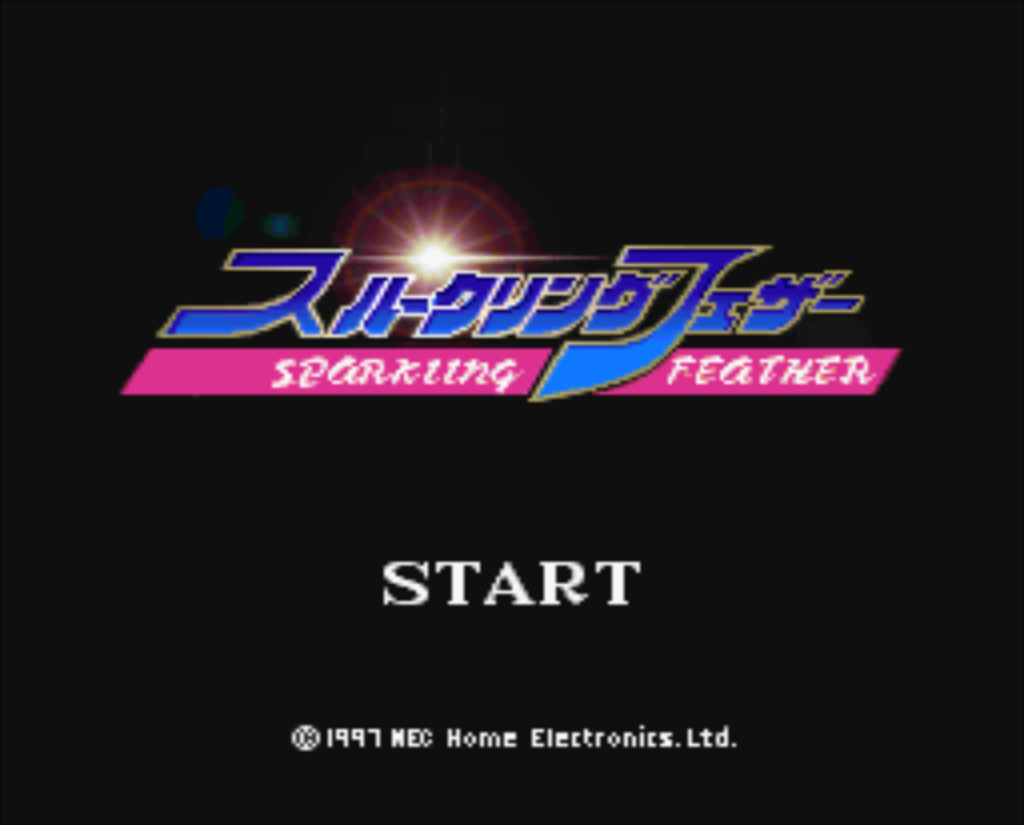
This is the second game on this blog for the ill-fated PC-FX. I have four games total for the system on my list but three of them are remakes; this is the only original SRPG for the system. Given how poorly the system was received it’s not a surprise that this game was handled by NEC themselves. On the whole it’s similar to the other games in that it plays to the strengths of the system by having a lot of anime sequences and fully voiced story dialogue, but the rest of the graphics are Super Famicom level or below.
As with the other PC-FX games, this one was too expensive for me to buy, and it’s so obscure there’s little information about it beyond a few short reviews and a full playthrough on Nicovideo. There are aspects of the system I don’t fully understand, and so it’s possible that my views towards the game are unfair in that respect. But, with that in mind this is the second SRPG in a row I’m stopping after a few stages.
The basic setting is that the world is being attacked by Steen, some sort of monster. It was hard for me to tell whether this was supposed to be taking place in the real world or not; if it’s not Earth it’s a modern-day setting on an Earth-like place. The main character is Shinguji Aoi, a high school student.
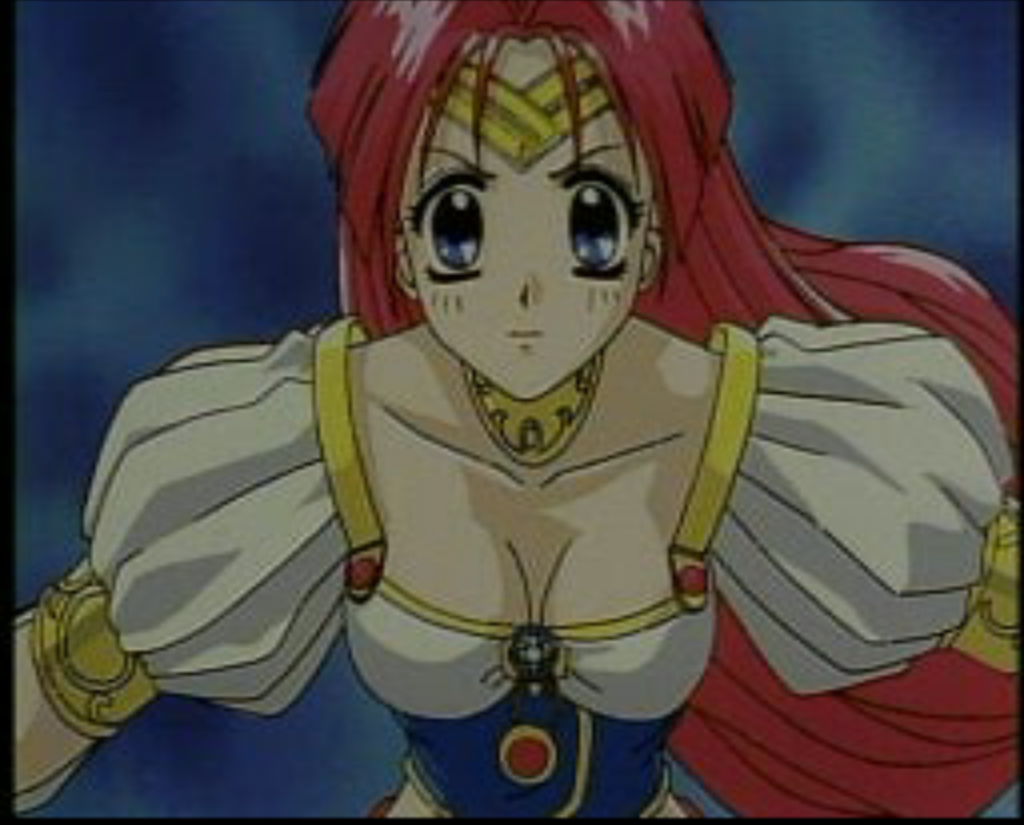
Aoi is visited in a dream by someone calling themselves Diamond Feather, telling Aoi he is one of the Feathers who transform to fight the Steen. Aoi refuses to listen but then is visited by Coral Feather.
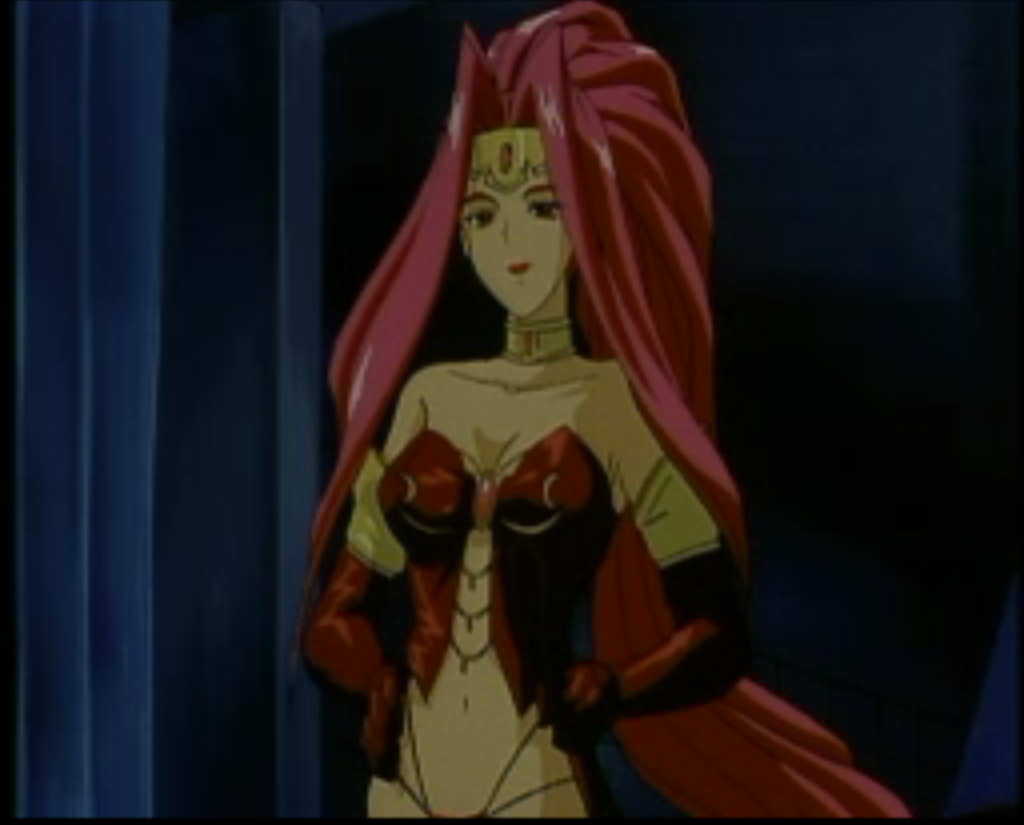
Coral Feather is part of a rival group that is using their Feather power for their own greed and ambition rather than to fight the Steen. Eventually Aoi powers up into Ruby Feather and we have the first fight.
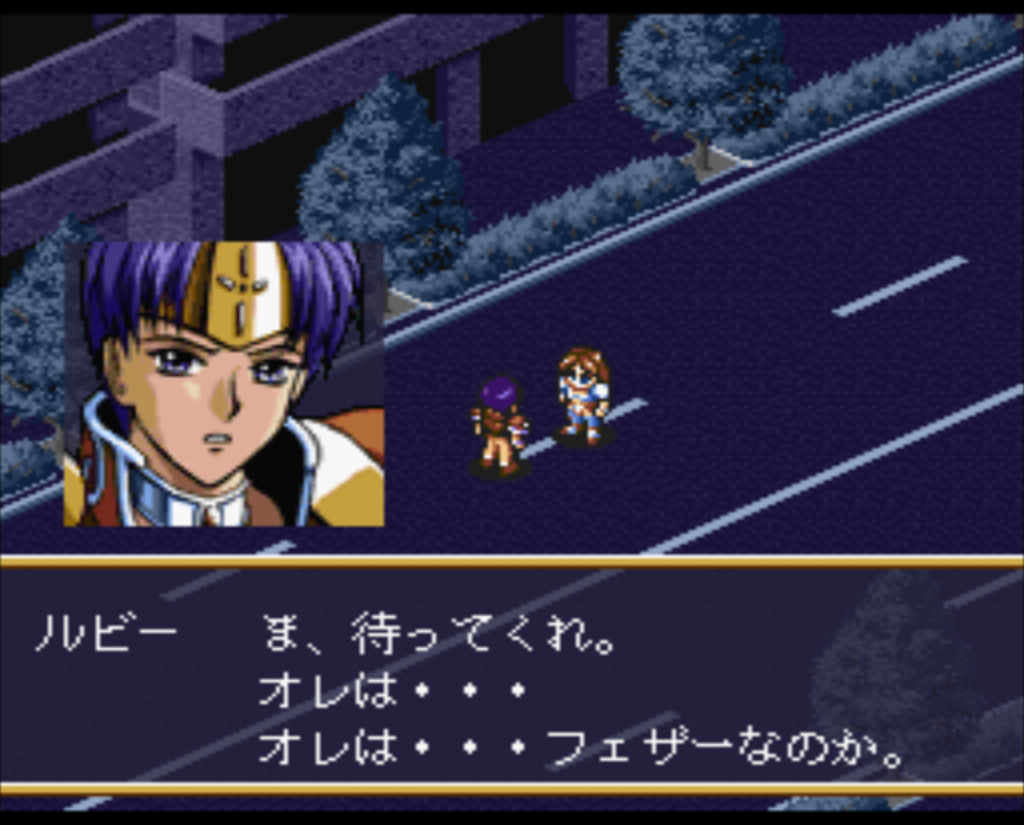
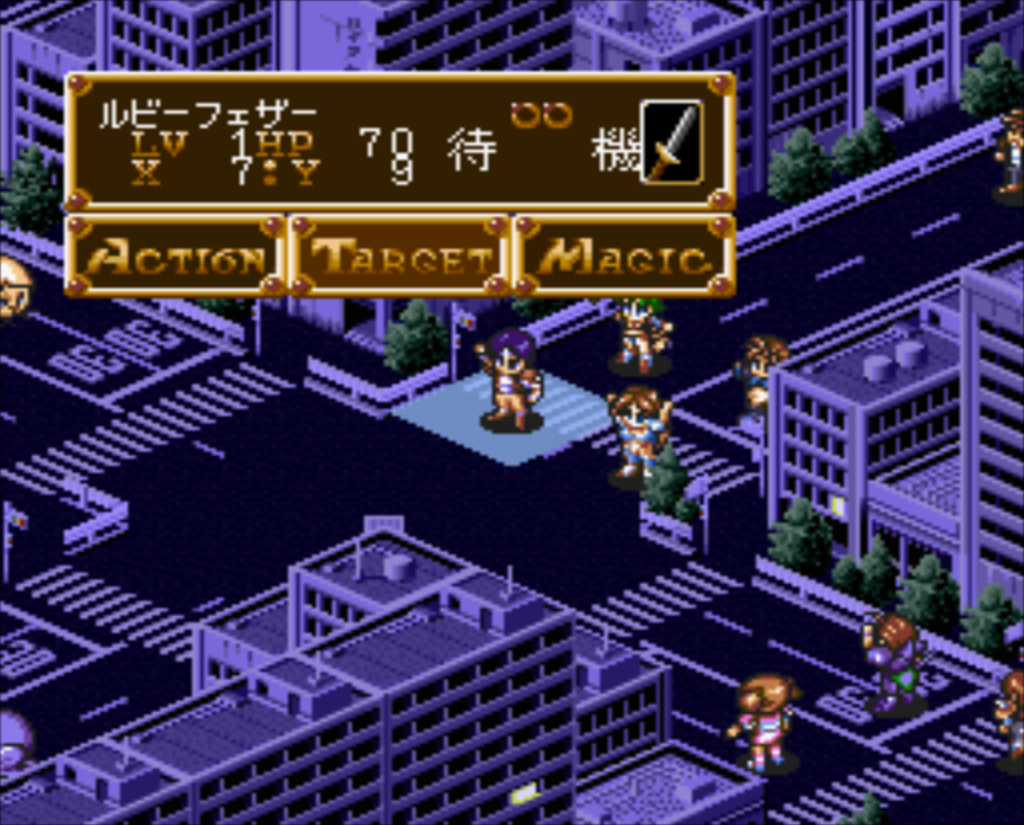
You begin with a team of 7 characters (all different Feathers). All combat in this game is done via AI instructions — including even your main character.
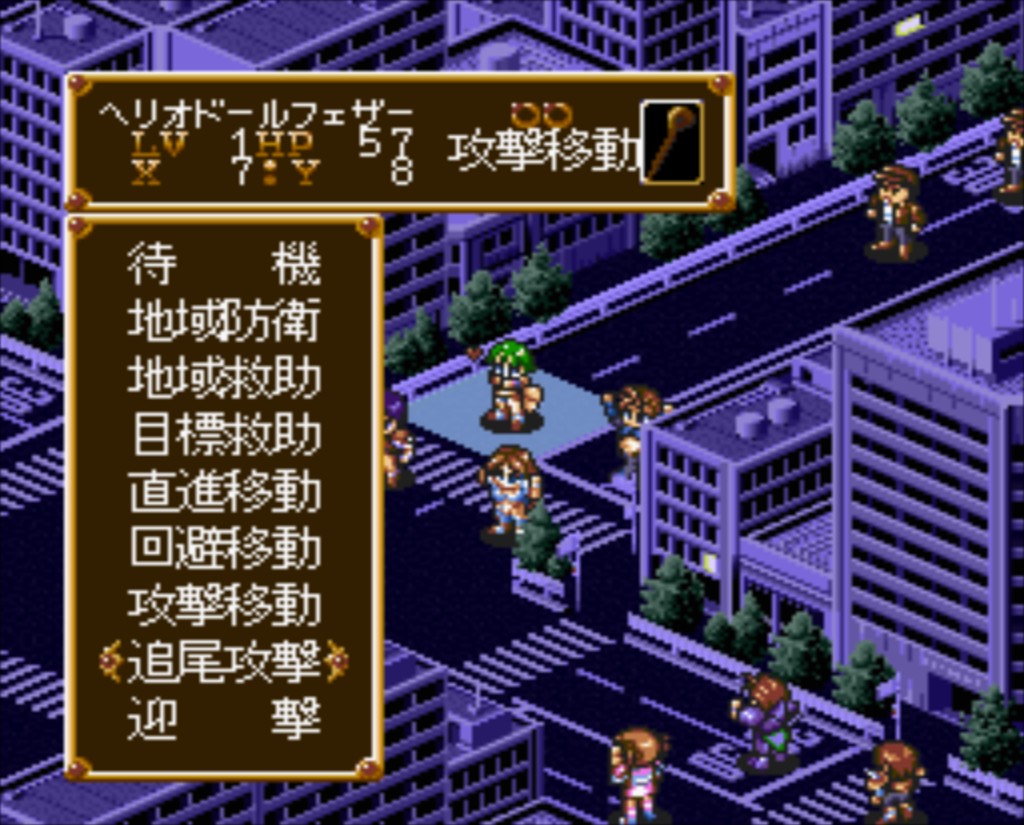
Part of my issue with this game is that the meaning of the AI commands was not clear without the instruction manual. The last three options in the menu above are Attack Move, Follow-up Attack, and Ambush. The meaning of the terms is clear enough (I guess) but what they actually do differently was hard to interpret.
More problematic is the “trust” system. Each character has a trust value from 1 to 5 stars. The lower the trust is, the less likely they are to follow your orders. This makes no sense from a story perspective because Ruby Feather isn’t the leader of the group; he just joined. But more than that, it’s annoying to try to be issuing orders and half the characters refuse — sometimes they will just sit there and do nothing for the whole battle while you repeatedly try to get them to do something.
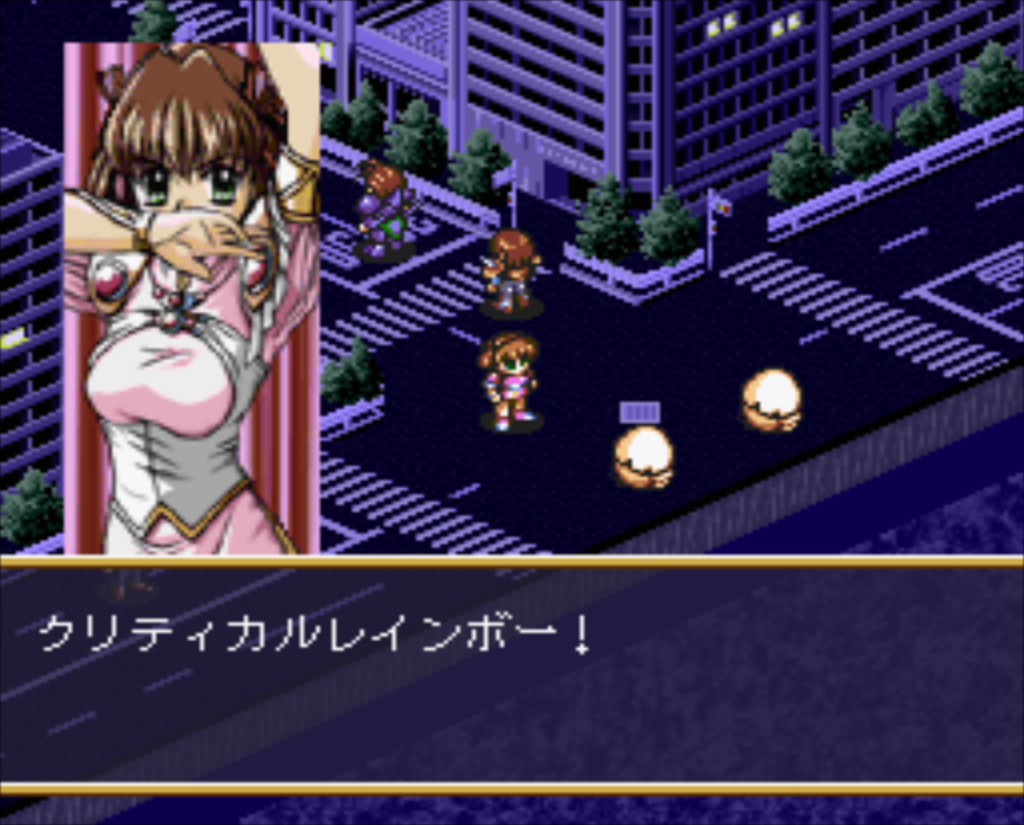
When they do attack, there seems to be no way to control whether they will use a normal attack or a special move (maybe this has to do with the AI command). Even Ruby, who has a 5 star trust and never refuses, can’t be directly controlled like this.
So basically this is a lot like Seikon no Joka in that most of the game is just spent watching the characters fight. I learned from a review that if you leave the game long enough the orders phase will end by itself, so you can literally do the battle part just by setting down the controller and leaving (since characters will act without orders). The only thing you need to press a button for is to clear the message if someone levels up.
The one thing you can control is making the characters use area-effect magic like buffs and heals.
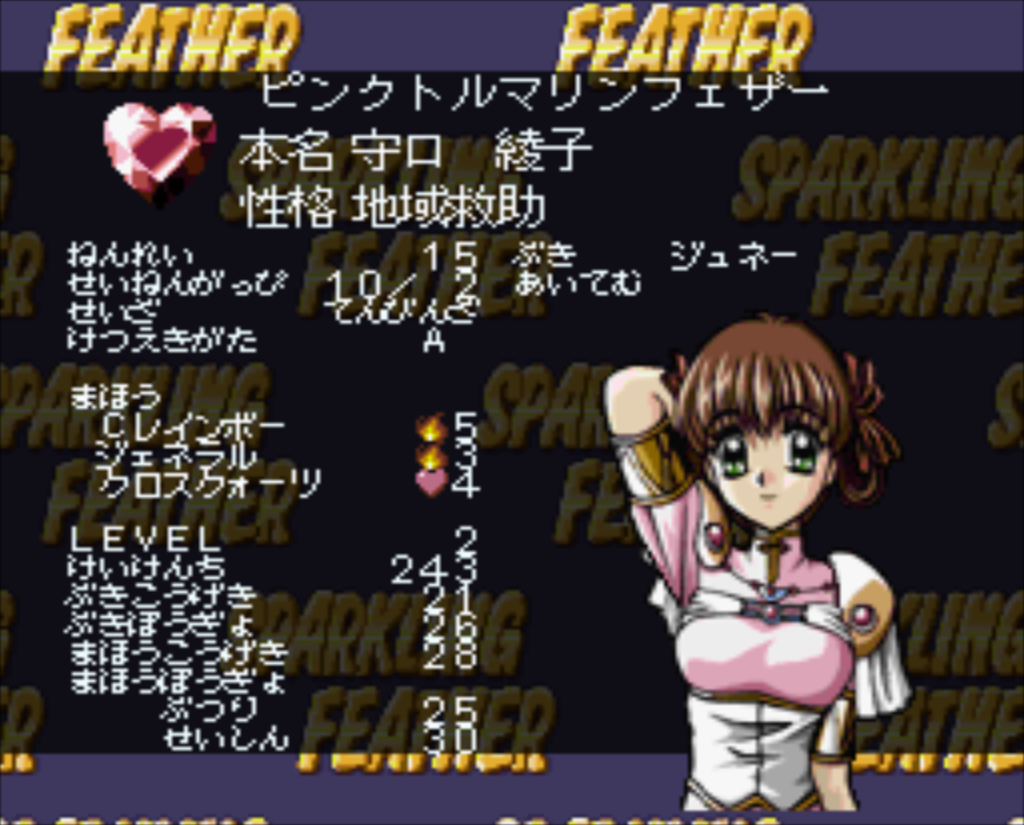
Even when they ostensibly follow your orders they often get stuck behind other characters or buildings, or try to find another way to reach the destination that doesn’t exist. Also if the characters die in battle they lose a trust star, which also doesn’t make sense — if a character refuses your orders, goes off by themselves and dies, why should they be less likely to follow your orders later?
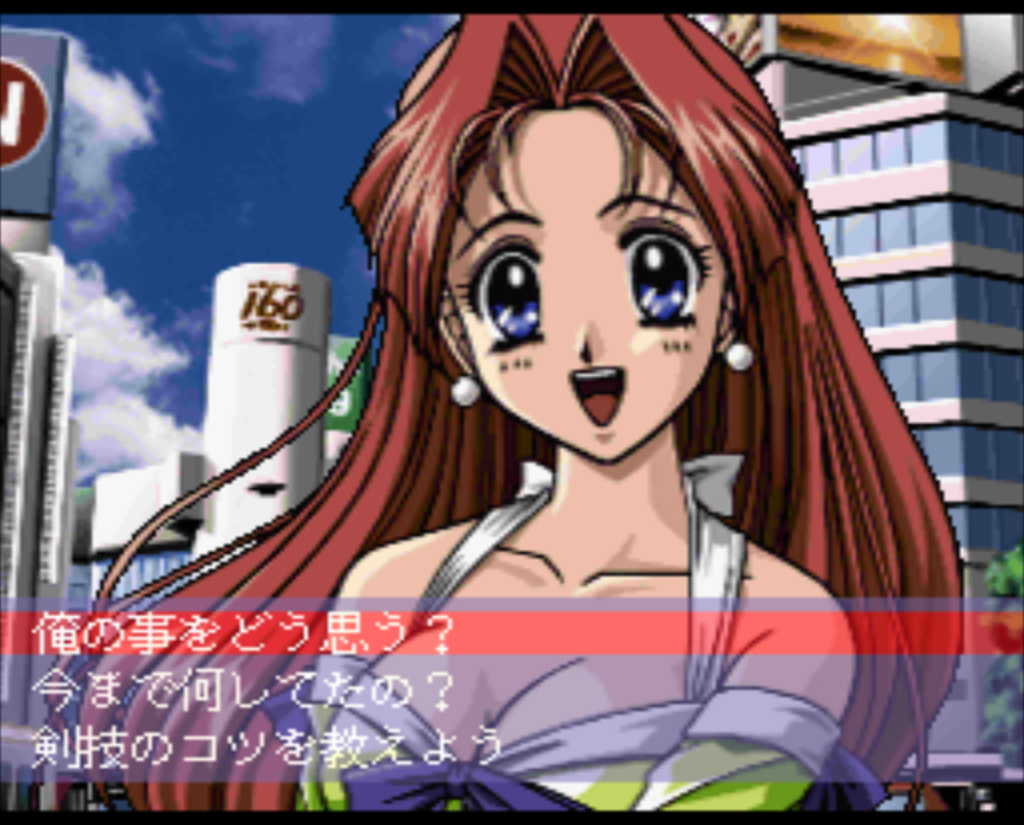
Between stages there is a dating system that lets you increase the trust, but it’s as opaque as the rest of the game. Who you spend time with is determined by a roulette wheel and a strange sliding puzzle system. Then you get 3 choices — in this case “What do you think of me?” “What have you been doing up to now?” “Teach me some sword techniques.” Some of these will raise trust, others lower, but it’s hard to tell which one is going to do which.
After the first stage Ruby joins the team and sees the flying ship the Feathers have.
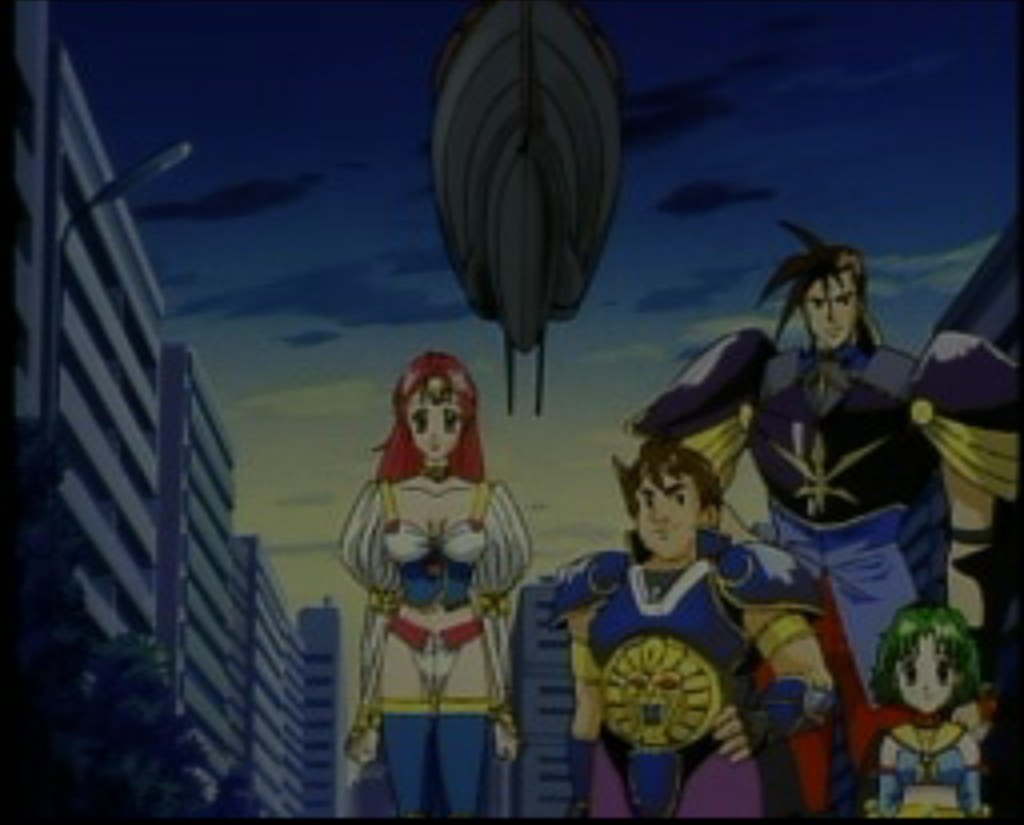
In the second stage we try to go to a concert but Tourmaline Feather attacks; it turns out the singer for the concert is actually a feather as well (Sapphire Feather).
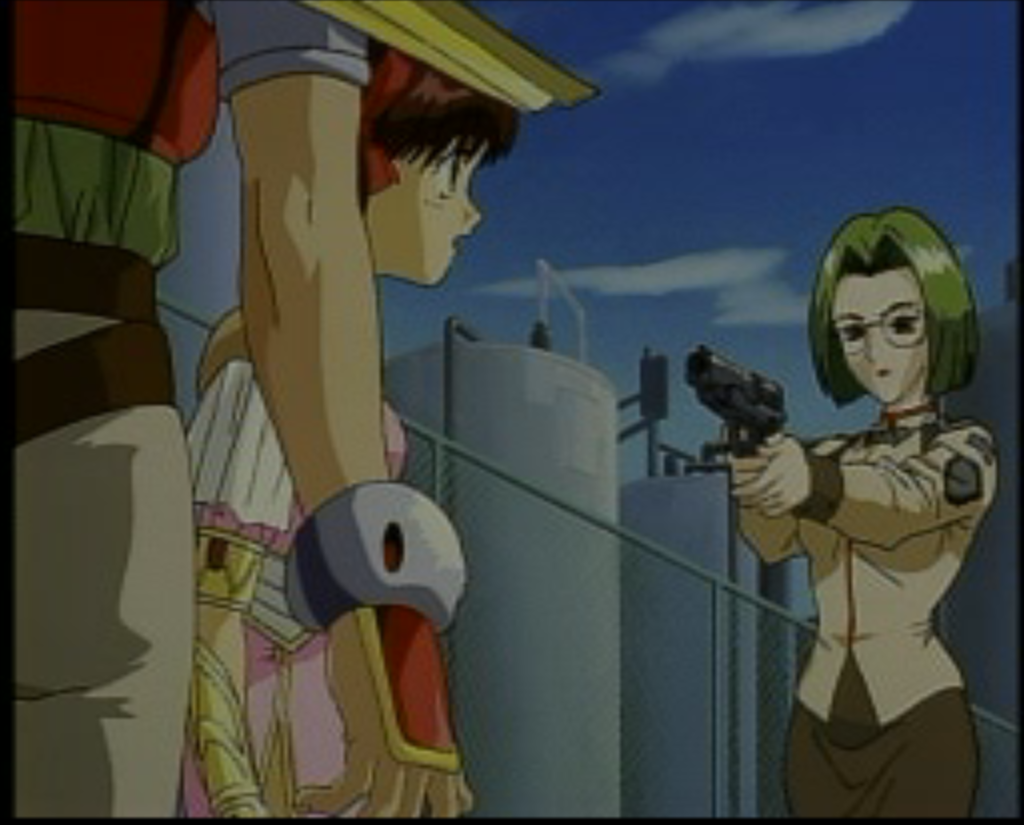
The third stage is a four-way fight between us, the Coral Feather faction, Steen, and the SCAT Earth defense force tanks. Coral Feather decides to team up at least for now to fight the Steen. Afterwards, the head of the SCAT forces tries to arrest us but Ruby uses his power to bend her gun and we escape.
At this point I was rather annoyed by not really being able to do anything in the stages, so I looked for Japanese reviews. It didn’t look like there was anything major I was missing; the reviews I saw were largely negative. The story was also criticized as not really going anywhere, having a bad ending, and not developing any of the characters.
So this is where I stopped. As I said, this is another game where it is possible that my opinion is lower than it would be if I had the instruction manual. It may be that certain characters are more likely to follow certain orders, or that if I had a better understanding of what each order did I would have more control. However, based on what I have seen from the Japanese sites, it’s unlikely that even with this information this would become a really good game. I did find one short review from someone who liked it a lot, but it wasn’t specific enough to tell why; it seemed like it was more from the cute girls than from the game itself.
So that’s it for the PC-FX — this is the fourth system I’ve “completed” after PC Engine, Game Gear, and Famicom (I have one more Mega Drive game that I missed on the initial list and need to get to at some point, and of course one more Super Famicom game which is still on the far horizon).
This game really feels like they picked a bunch of things because they were popular and then tried to fit them all together without any rhyme or understanding of why they were popular. People like SRPGs, so let’s make a SRPG. People like dating sims, so let’s add that to the mix. People like watching anime cutscenes while they play games, so let’s add that too.
Either way, its kind of strange to see a game with decent quality video in it have a game screen that wouldn’t have been out of place on a last gen console. Really makes the whole package seem as ill-fitting together as I’m sure it is.
The in-game graphics don’t bother me, but that whole “trust” system seems incredibly stupid. It’s one of those “how did anyone involved in making this think that was fun?” situations.
Have higher trust levels give stat boosts or make characters more likely to use special attacks, sure. But the way it is, it’s hardly a game, let alone a strategy game.